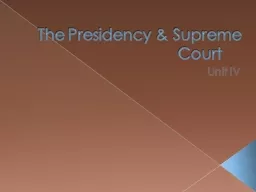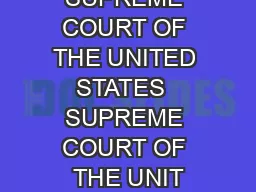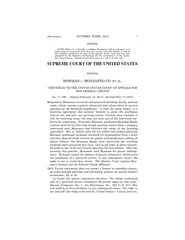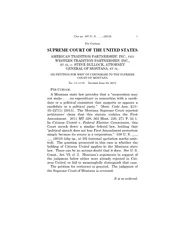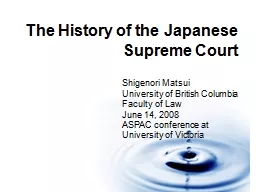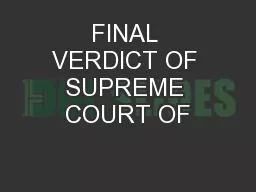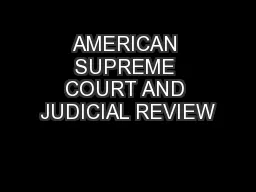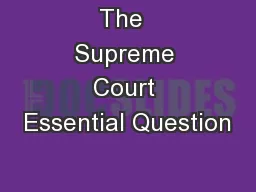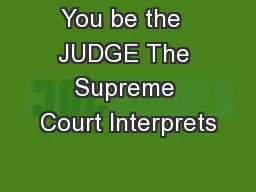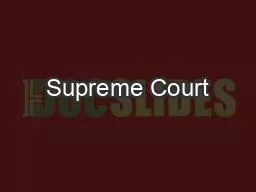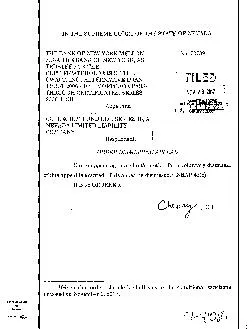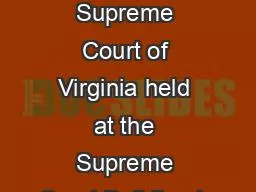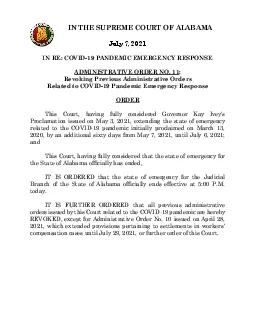PPT-The Presidency & Supreme Court
Author : lindy-dunigan | Published Date : 2017-06-01
Unit IV Chapter 13 The Job Succession amp the Vice President Roles CONSTITUTIONAL Roles Chief of State Reigns amp Rules Symbol of American People Chief Executive
Presentation Embed Code
Download Presentation
Download Presentation The PPT/PDF document "The Presidency & Supreme Court" is the property of its rightful owner. Permission is granted to download and print the materials on this website for personal, non-commercial use only, and to display it on your personal computer provided you do not modify the materials and that you retain all copyright notices contained in the materials. By downloading content from our website, you accept the terms of this agreement.
The Presidency & Supreme Court: Transcript
Download Rules Of Document
"The Presidency & Supreme Court"The content belongs to its owner. You may download and print it for personal use, without modification, and keep all copyright notices. By downloading, you agree to these terms.
Related Documents

